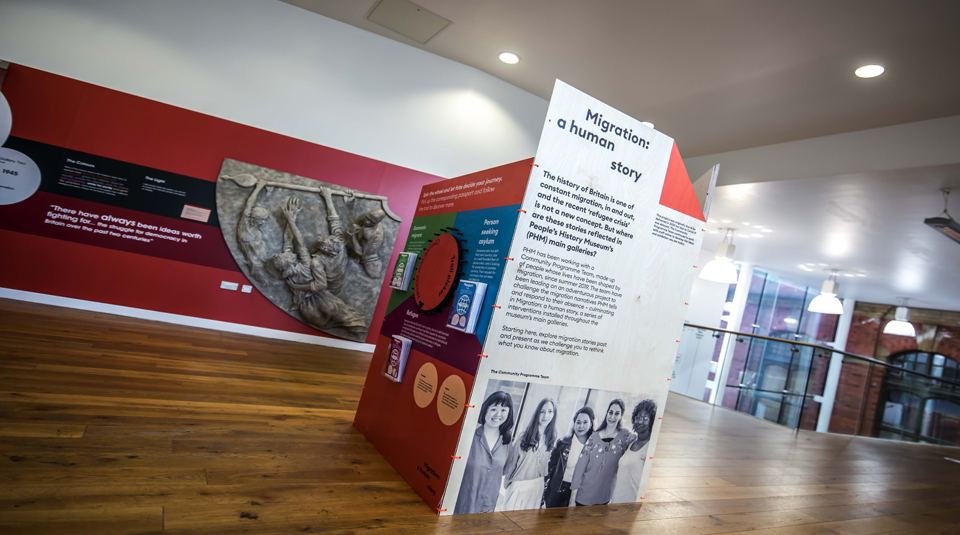
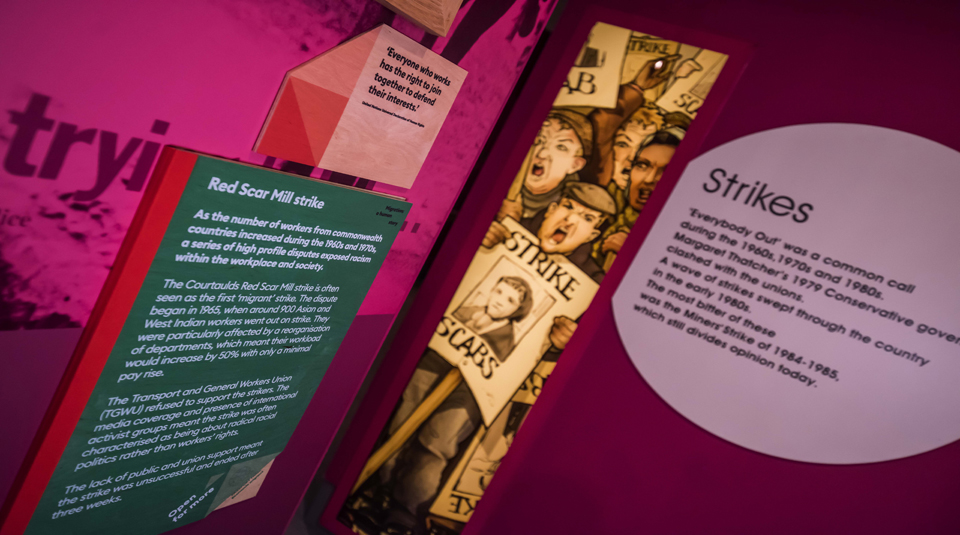
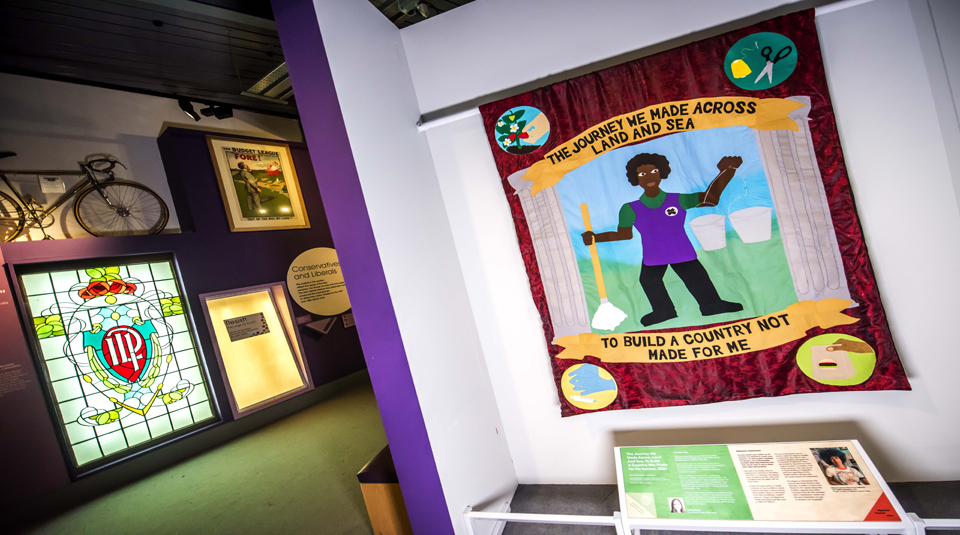
Migration: a human story is now open at the museum until April 2022. In this blog, People’s History Museum’s (PHM) Community Programme Team Jo Yee Cheung talks about the museum’s migration project and the new series of related interventions which inject strong contemporary issues into the heart of the main galleries.
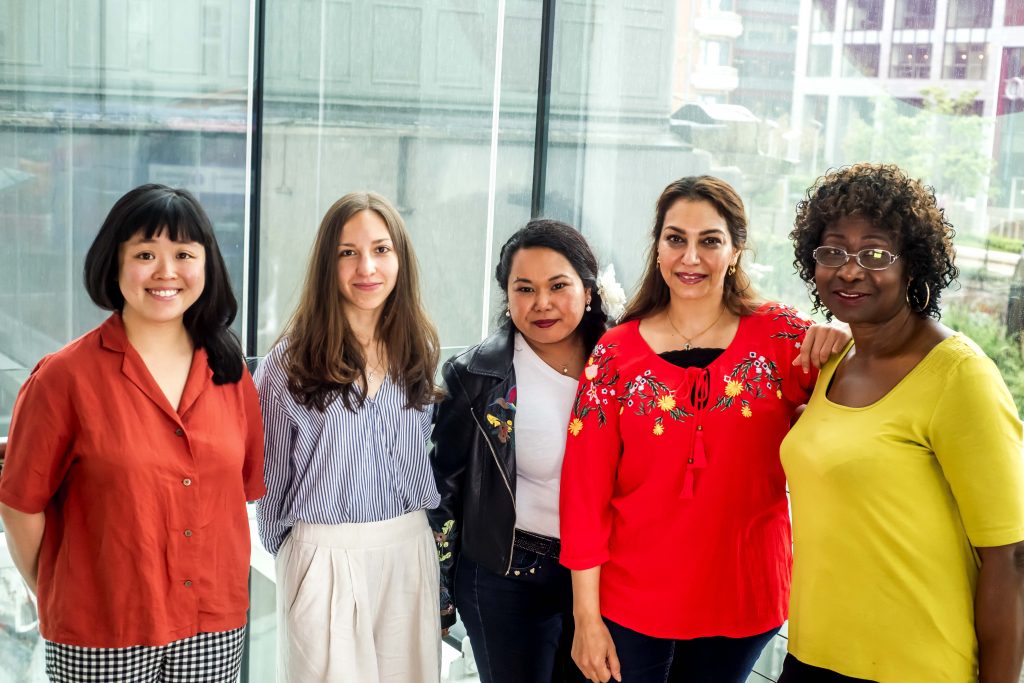
Since 2019 the Community Programme Team (CPT) has worked closely with People’s History Museum (PHM) to explore the role of migration within its existing exhibitions; commission new projects and events; and develop a series of gallery interventions which highlight the crucial role of migration in the UK’s political and democratic history.
We are a truly diverse team, with five very different sets of lived experiences and points of view – between us we have lived in eight countries and speak twelve different languages. Being a part of the CPT, particularly during the Covid-19 pandemic, has been a great privilege and a testament to everyone’s personal resilience and commitment to the programme, as well as our team-working skills!
Our weekly meetings over the last two years (both in person and over zoom) have been a place of friendship and welcome, where everyone (both CPT and PHM staff) has worked hard to support one another. As we come to the end of the project, it has been amazing to see the evolution of our early ideas and conversations into tangible pieces within the museum. I couldn’t be prouder of being part of this extraordinary group and of what we have achieved together.
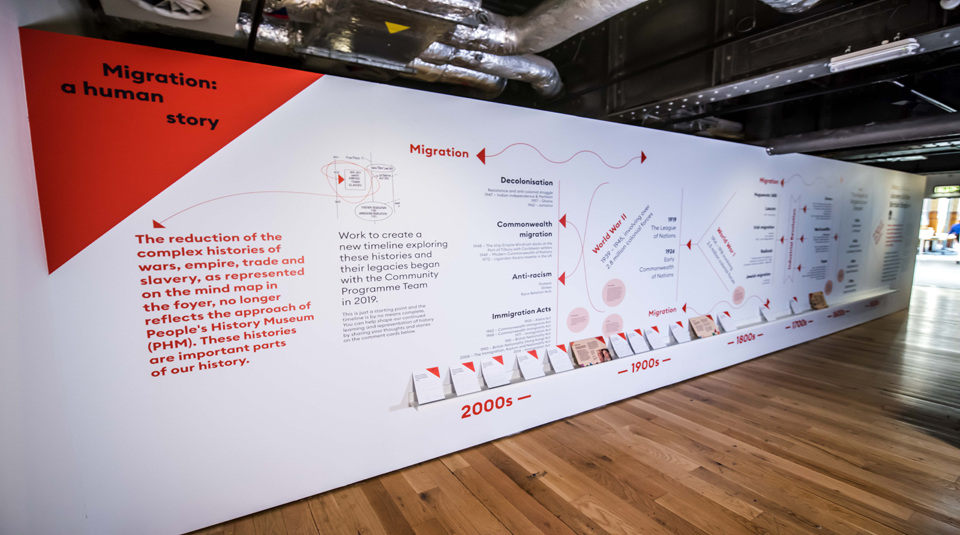
The process of developing these interventions has taken over two years of going backwards and forwards (and sideways and every other possible way) on our original ideas. It certainly hasn’t been a straight-line progression from concept to outcome, and it has taken a lot of discussion and collaborative working to get to this point. I think we’ve all found it pretty incredible to see our ideas go from felt-tip drawings, post-its and mind-maps; to artist briefs and draft illustrations and text; to the final interventions now displayed in the galleries.
Throughout the programme, PHM staff have pulled together experts to help guide and equip us with the skills needed to shape the interventions. It is worth emphasizing that none of us are trained historians or museum curators, so this support has been an essential part of the co-creation process. In addition to working on the interventions themselves, members of the team have taken part in other opportunities – for instance, giving tours of the galleries for International Women’s Day; meeting with PHM’s funders; speaking about the Battle of the Ballot timeline in the museum foyer, attending a UNISON event for black members; consulting with young BAME people about the new timeline; and helping to shortlist the exhibitions and events that were delivered as part of the wider migration programme. I think everyone in the CPT can agree that, through the process of putting the interventions together, we have all learnt something new and done things that they might otherwise not have!
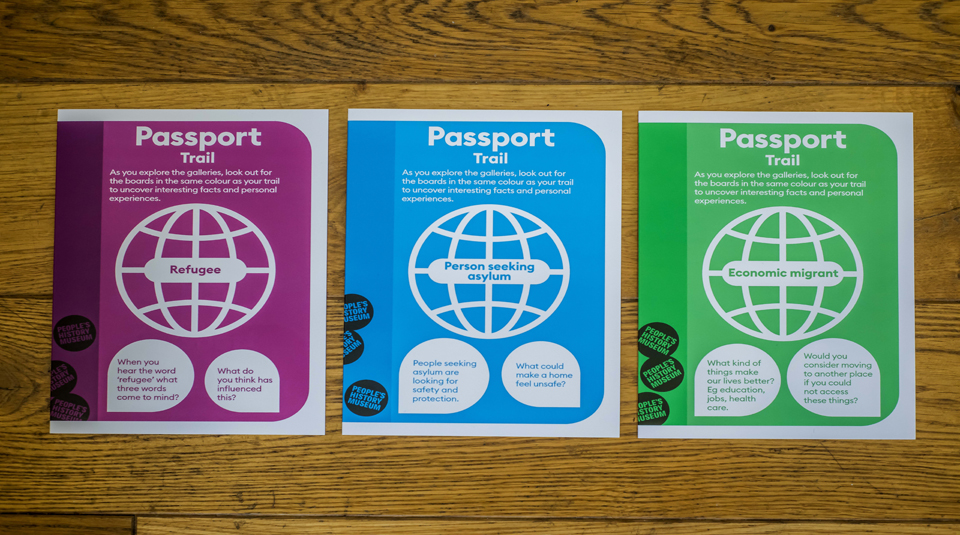
There are four main interventions that have emerged from the programme (in addition to our personal stories dotted around the galleries): a ‘Fake Trade Union Banner’ inspired by some of the banners in PHM’s collection; animations based on real-life interviews with migrants conducted by members of the CPT; an updated Battle for the Ballot timeline (based on the original timeline in PHM’s atrium); and a ‘Passport Trail’ highlighting various migration stories within the museum’s collections. Underpinning all of this, are three key messages that the CPT wanted to convey: that migration isn’t new; that people have many different reasons for migrating; and that migrants positively contribute to society in all kinds of ways.
All the interventions have been designed to be as engaging and interactive as possible, especially for children and families! The passport trail was conceived as a way for members of the public to structure their visit and notice aspects of the museums exhibits within the context of different migration stories (e.g., from the point of view of an asylum seeker or a migrant worker). One of the reasons that we decided to call the project Migration: a human story is that we all felt that the best way to engage the public in the topic is to appeal to the deeply personal way migration affects different individuals and groups – as exemplified in the animations, which are all based on real-life individuals. In doing so, we hope that visitors will be encouraged to re-evaluate often one-sided and damaging mainstream stereotypes about migrants and explore the wider context of migration in the UK. Most importantly, we hope that the public (especially people who might not usually come into the museum) will find the interventions enjoyable and interesting to look around!
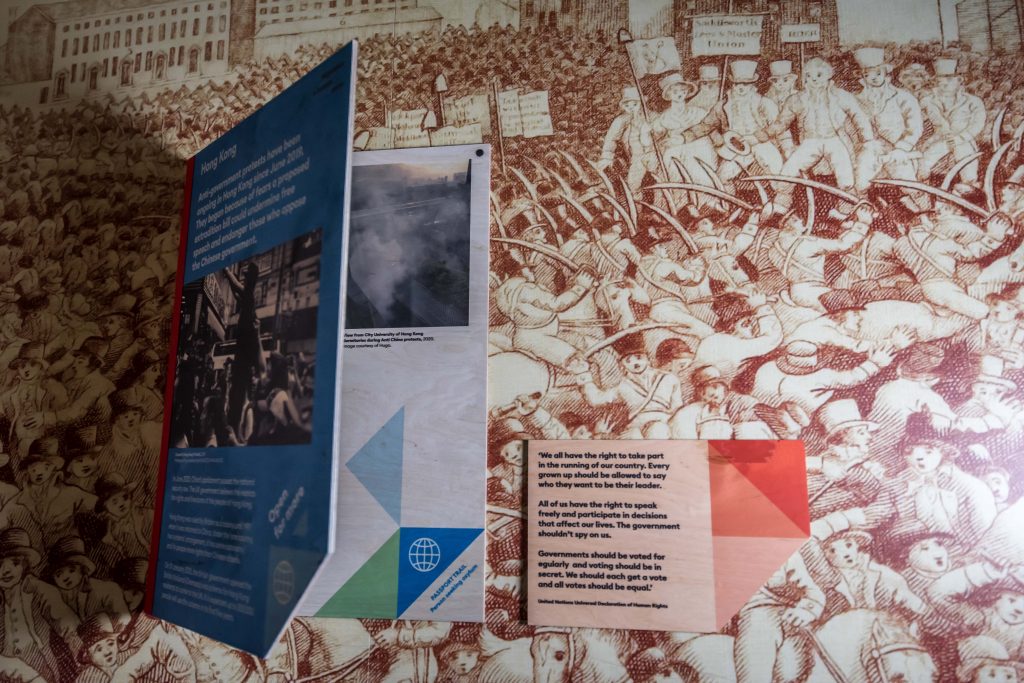
The CPT chose several exhibitions and events as part of the programme to accompany the gallery interventions. Due to Covid-19, it’s only just become possible for some of these projects to take place – for instance, Counter-Flow: the movement of cultures from one place to another and Bridging Young Communities with Rochdale Interpreters exhibitions. Keep an eye on the museum’s website for updates about future events throughout the year, as well as for PHM’s after hours’ Radical Lates. Much of this work can also be experienced online as well as onsite – well worth getting stuck into!
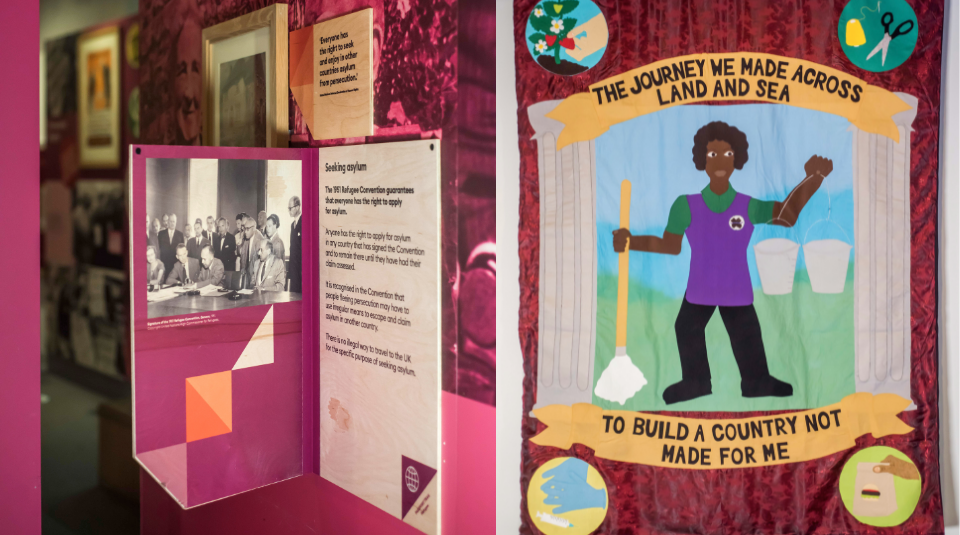
As the project draws to a close, our hope is that the programme will help to highlight the key role of migration in the UK’s democratic history and continue to create discourse and discussion around this complex and important topic for years to come. From a personal point of view (as a second-generation Chinese woman), I am really pleased to see Chinese stories now represented in the museum through the section on the 2020/21 Hong Kong Protests, as well as the personal stories of other individuals on the CPT.
Muliana Adjamian: ‘For PHM the legacy is bringing to the public migration stories from the past and present at more personal level, as it includes stories of people directly involved with PHM. My Legacy is showing and educating my children that migration has happens since the dawn of human beings and it will carry on forever. We are all the same regardless of skin colours, races and any other outward appearance. And we all have our own stories of why we migrated.’
Agnes Fough: “For PHM, the legacy will be the ability to shine a torch on migration as a human story. As an individual, the legacy will be the revelation of the forgotten historical events now brought into the open in the “Alternative Battle for the Ballot”.
Einas Khaleel: ‘This project is part of a programme of exhibitions and events on migration, showcasing such an intriguing topic as an appetiser, because it is not limited to a single event at a given moment… It happens every now and again; just look at what’s going on in Afghanistan right now and how people are struggling. While sharing my personal experience, I believe it is a reflection of many other migrant women who are suffering greatly as a result of their partner’s abuse, have lost their jobs, and have left home.’
Monika Titãne: ‘Our project is only a starting point and will serve as a springboard for further change and widening the representation of migrants from a community perspective. It is a step in levelling the playing field for those of us who have been undermined and who deserve appreciation and recognition. Individually, this has undoubtedly made each of us braver and more hopeful for the future.’
Visit Migration: a human story until Sunday 24 April 2022. Part of a huge programme of events and exhibitions exploring migration which includes PHM’s 2020-21 Banner Exhibition. The banners in the exhibition reflect past and present migration movements and the many challenges and opportunities that migration presents. With support from Art Fund and The Joseph Rowntree Charitable Trust
Book for an intriguing tour of Migration: a human story with PHM’s Community Programme Team on Saturday 23 October or Friday 10 December at 1.30pm
Entry to the museum is free with a suggested donation of £5. Opening hours are Wednesday to Sunday, 10.00am to 4.00pm.
Watch a full recording of the Migration, Race & Empire: LGBT+ histories tour, at People’s History Museum with refugee rights campaigners Prossy Kakooza and Maggy Moyo, and PHM Community Curator Jenny White.
Read Artist Youcef Hadjazi’s blog Illustrating queer migrant journeys, as he reflects how he has used his own experiences for creativity and exploration.